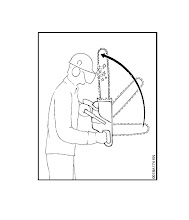

Going to the museum to stimulate repressed memories.
I usually have a good idea of what artists are saying through their work. Most of the time it isn't a gut reading but more of an academic realization brought about by massive doses of art installing, art history, art magazine reading and art show going. I can only count a handful of times that I had an aesthetic experience that wasn't somehow already burned in memory before I saw the work. I have an encyclopedia of images, artist statements and curatorial poetry that fills in the gaps between the work and the back of my head.
From the standpoint of knowing before going wouldn't it be cool to recall a memory that wasn't informed by the day job or amateur pleasures. When I was young and my parents dragged me around to museums I remember thinking, "why are these things important and why do my parents have an interest in them". These "things" ranged from artifacts of natural history, fine art and applied art. For the most part, a child has an instinctual or emotional experience in museums and sometimes his or her parents have a more puzzling experience because, perhaps it's a learned response they require.
Studied assessments are useful for cultural purposes and academia is fueled by them but what about the information that isn't readily codified or that slips through the labels or has been labeled but still has an alien relation to it's tag. I'm talking about the, "yes I know what this is but it's telling me something else and it makes me feel human" - feeling. I am talking about music or the musicality of art, the one - two punch of being conceptually sound and yet sublimating.
Rosalind Krauss describes Andy Warhol's rorshach paintings as a “parodic vision” in response to color field paintings which had attempted “to move painting into the disembodied realm of pure opticality”. In color field paintings, any interpretation relied solely on the response of the individual observer, saying more about the observer than the work itself. Krauss continues, “Warhol pulled the plug on these sublime aspirations by reminding us that there’s no form so innocently abstract that it can’t be turned back into literary content”. I had the chance to see several very large Warhol rorshach paintings at the Seattle Museum of Art. At first there was this feeling of being told a joke or parody but because of the scale and craft of the work I had to stay awhile and inspect the beautifully made and torrential surfaces. The paint or ink that made up the ink blot was thick, textured and black. Some of the black had oxidized and formed that rainbow slick you see in parking lots after a rain. The paintings were quite brooding and hilarious at the same time.
Sigmar Polke did some interesting landscapes for Parkett no.13 1987. Here he used several tactics for exploring the double image. He strays in two examples by utilizing symmetry found in the image itself but then thereby making reference back to the mirror image. Polke should be closely watched because as an artist he's very much like Warhol. They are both alchemists of pictoral space that both come off as aloof because of their seemingly effortless approach to a complex interplay between the viewer, their intentions and the work.













